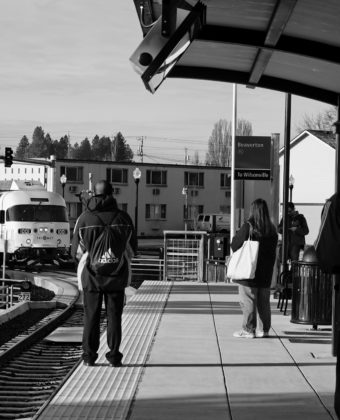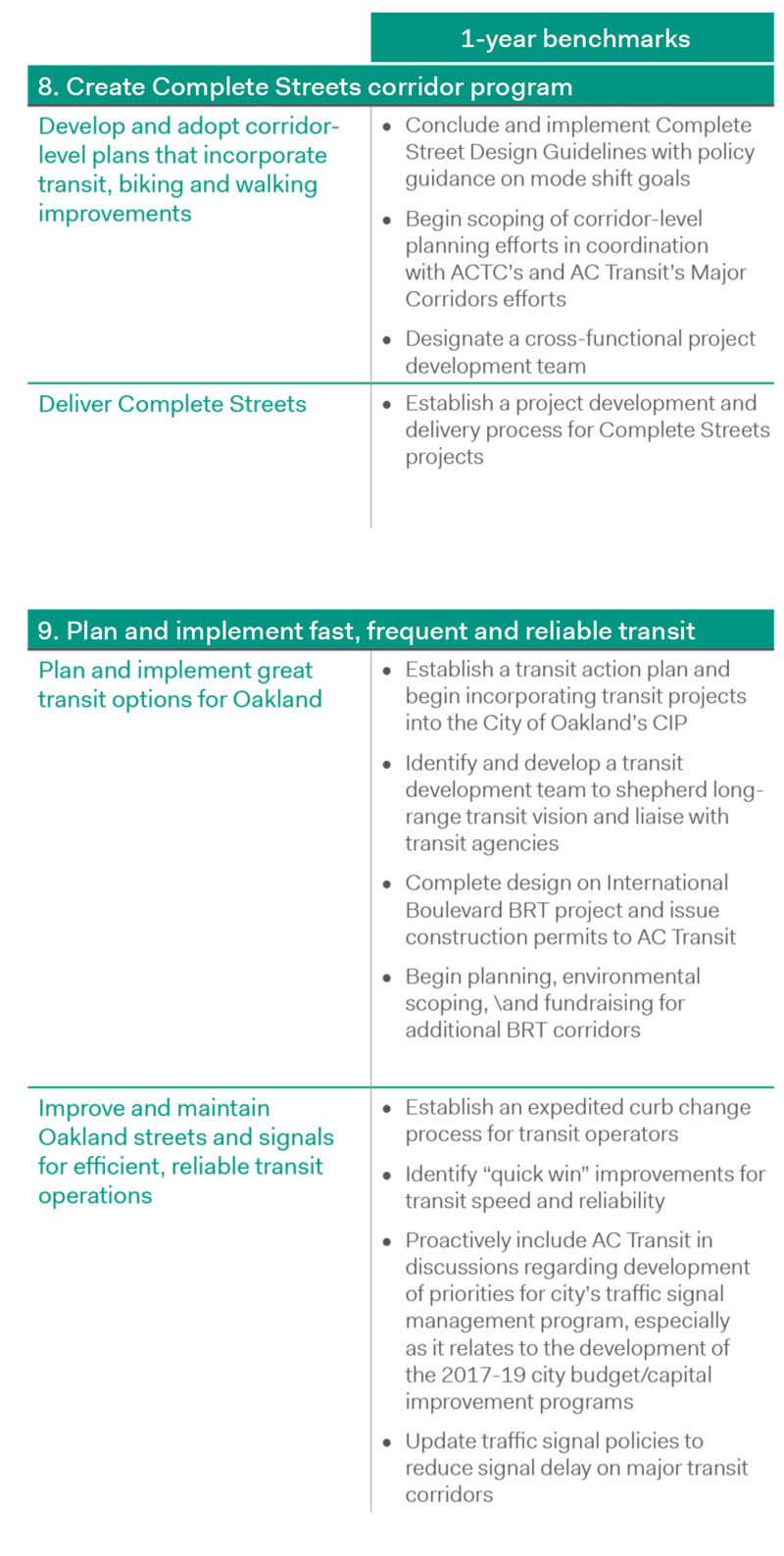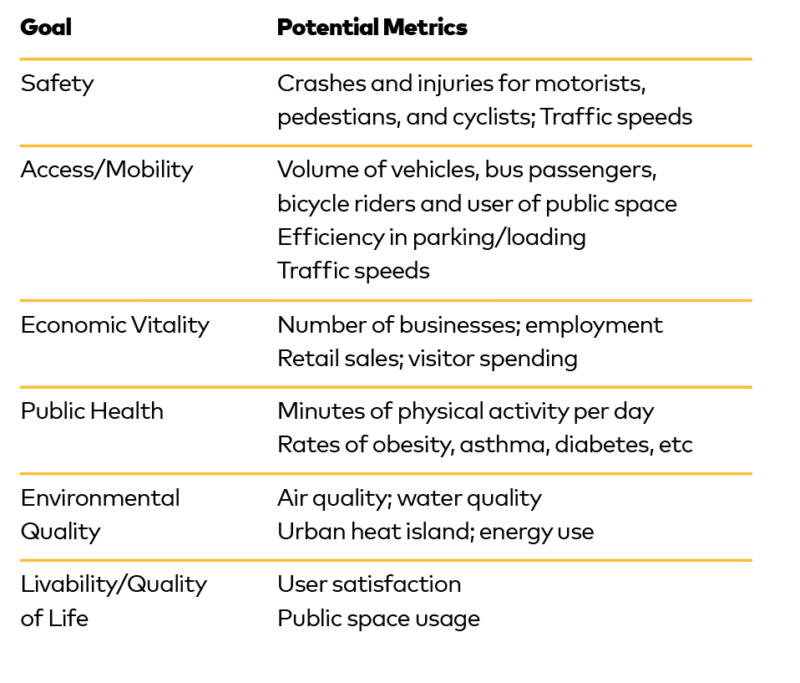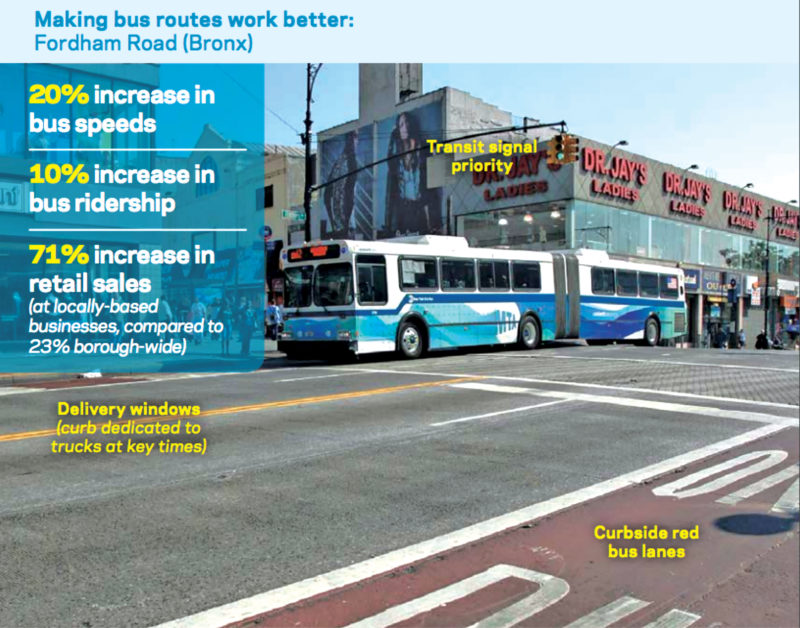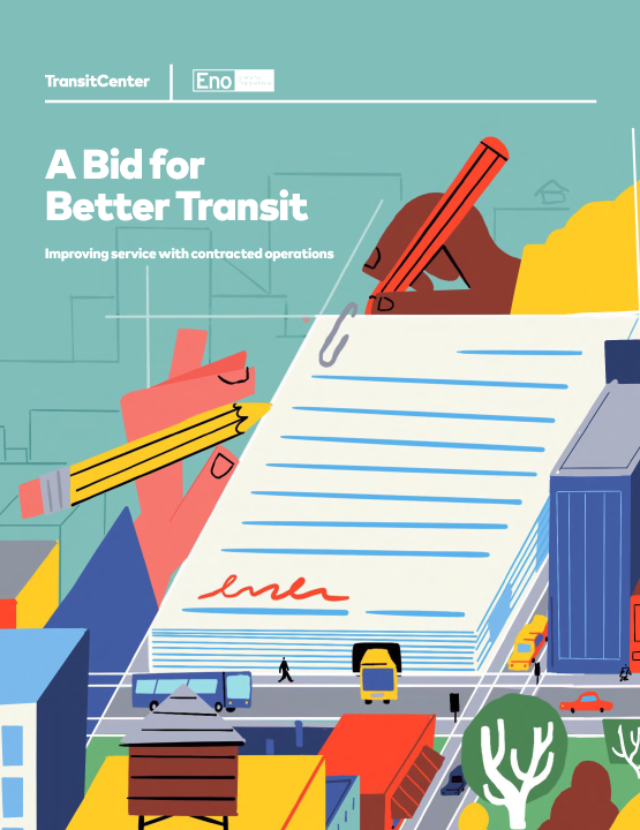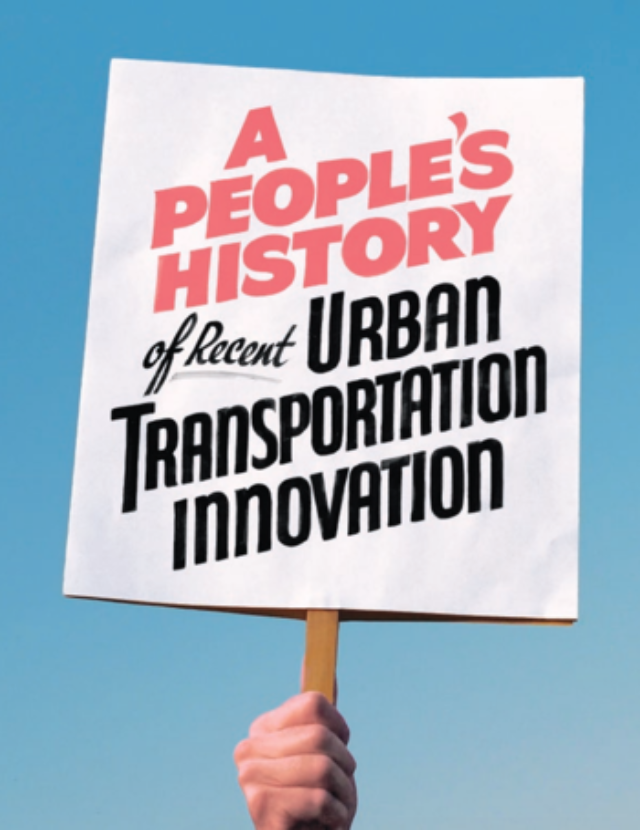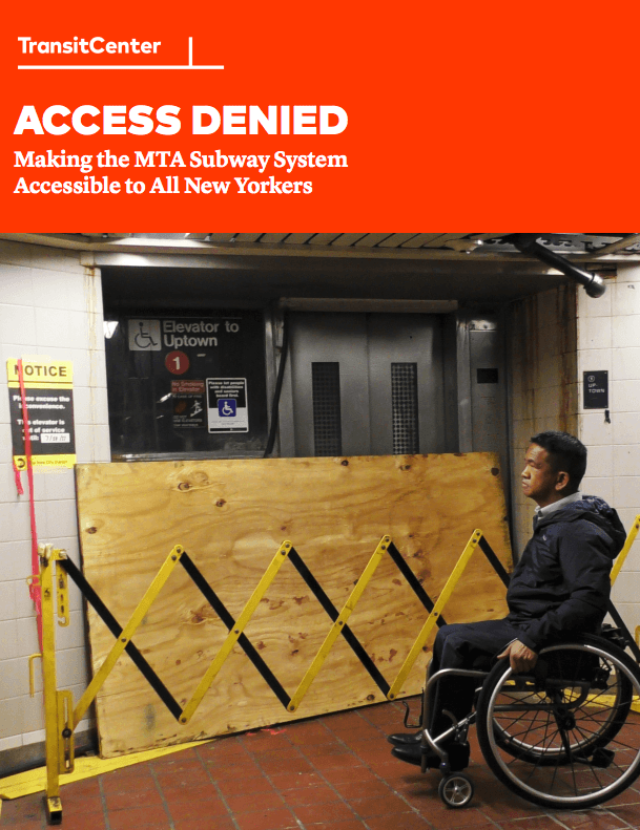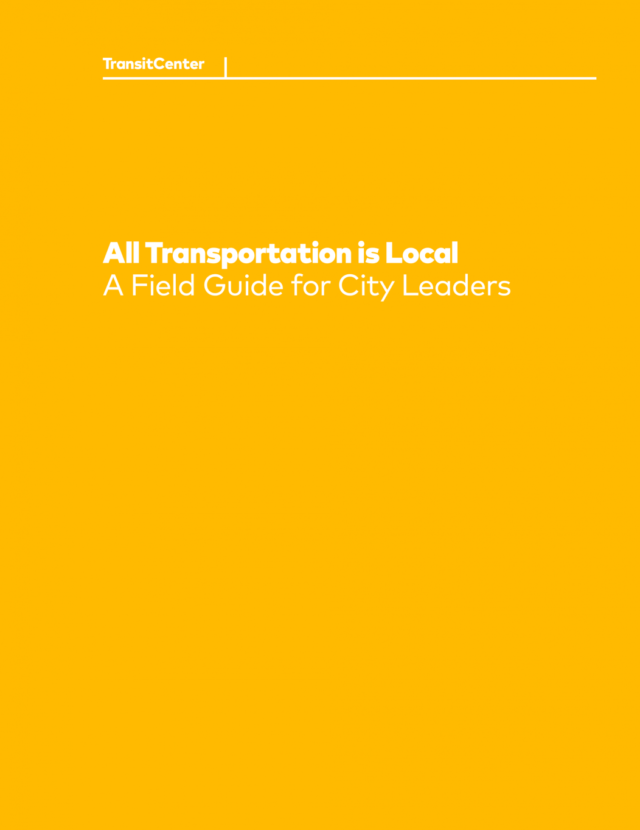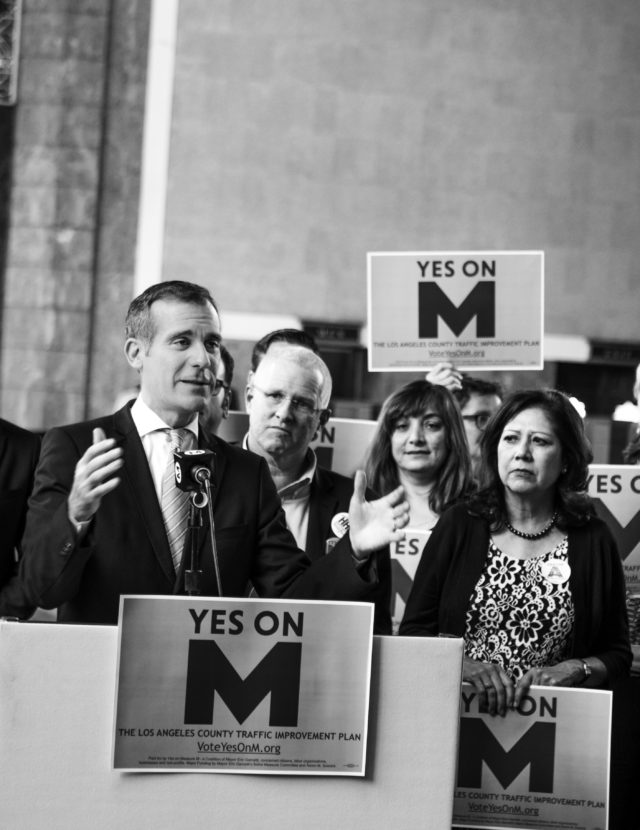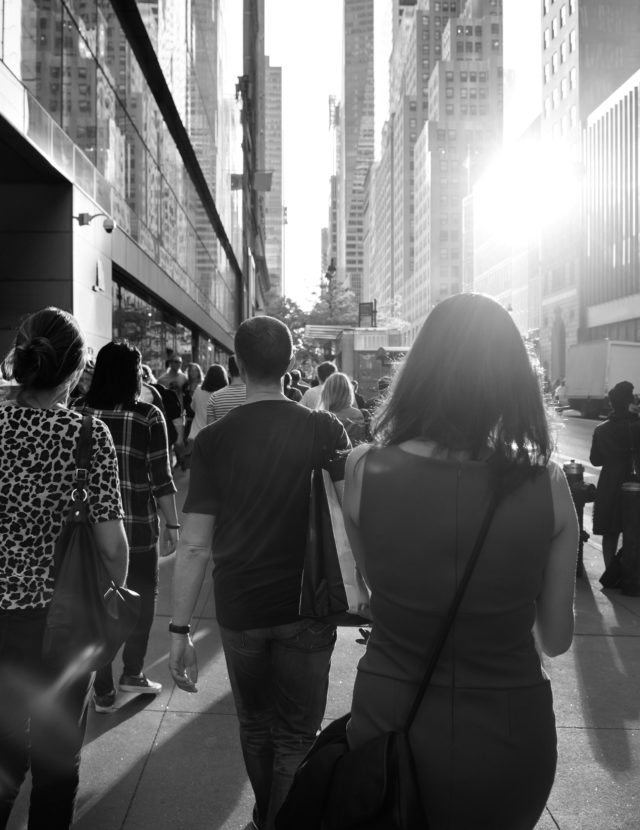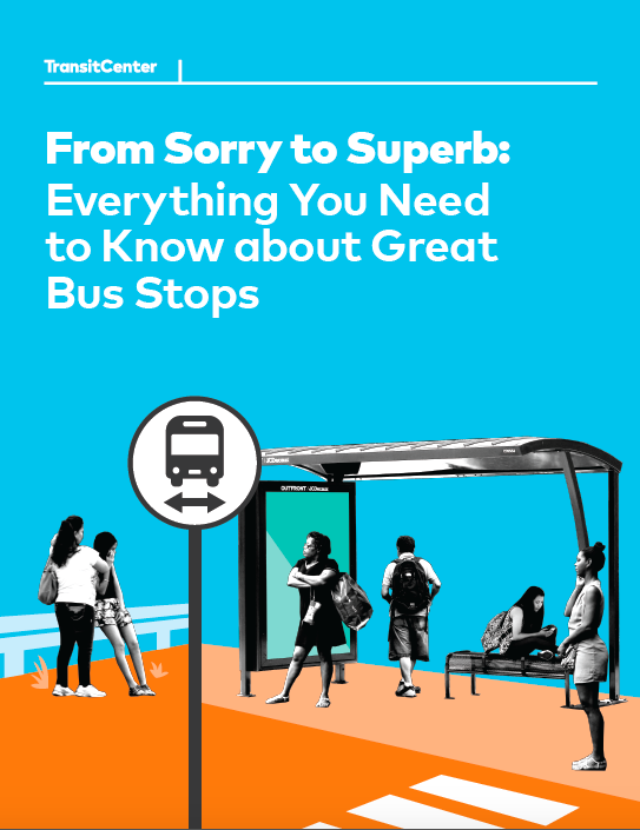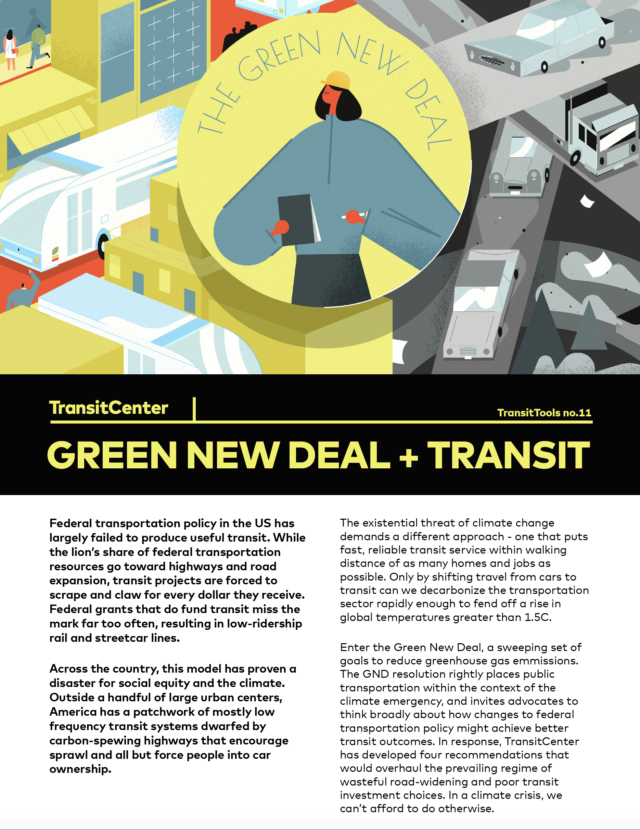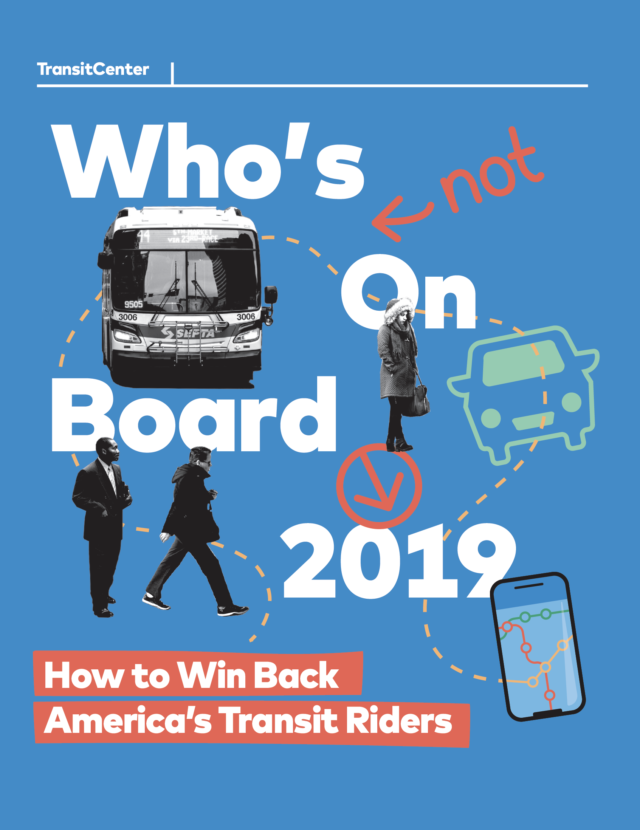Hire the right people – and empower them to move fast
One of the most important things you can do as an elected leader is to hire the right transportation leaders: People who aren’t just productive and knowledgeable, but who will work quickly and boldly, and talk about transportation in ways that excite the public. Without strong management working for you, you may find that a recalcitrant bureaucracy makes your term in office frustrating to you and non-responsive to your constituents.
What qualities should you look for in a manager to lead your transportation agenda? Formal credentials and transportation experience can be useful, but they are not the most important indicator of a manager’s potential success. Sometimes the most important thing a transportation leader can do is to question conventional wisdom and create new ways of doing things. Look for a transportation staff leader who:
Transportation doesn’t exist for its own sake, but to serve residents, workers, and visitors. Fundamentally, transportation is about access: How easy is it for citizens to access jobs, schools, groceries, and hospitals? Can they get to religious services, visit friends, and participate in their community?
If your city is one where most destinations can be accessed only by private car, many of your citizens will be shut out. A city that provides choices, allowing access via transit, walking, and biking, is a city that works better for everyone.
Your residents also want to breathe clean air, and their children to be able to walk to school, and for senior citizens to safely cross the street. And your city’s bottom line will be stronger if you build vibrant shopping districts where people can walk to a variety of stores — not strip malls that maroon retail activity on an ocean of parking lots.
In other words, your transportation director should consider herself or himself part of your city’s agenda for public health, safety, economic vitality, and quality of life.
A good transportation leader grasps the connections between transportation and economic development and public health and pollution, and instinctively makes alliances with other agencies, residents and civic groups focused on those issues. Such leaders will have a knack for reaching out to the parks and recreation department to ensure that on-street bike paths connect to trails in parks, for proactively addressing how the state highway department’s off-ramps affect your local streets, and for working hand-in-hand with your transit agency so that bus routes get signal priority and bus stops have good sidewalks.
She or he also needs to be someone you can rely on to represent you with neighborhood associations or merchants’ groups, and explain the necessary trade-offs among different perceived needs.
Transportation agencies are historically rife with specialization: planners, engineers, designers, forecasters, modelers. What you need in a management leader is a “systems thinker” who is conversant in all those fields, but not partial to any single one of them.
Finally, at a time when transportation practice is changing rapidly, it’s useful for today’s transportation leaders to look beyond local precedent. That means you and your staff should connect with peers elsewhere. You can join networks like the National Association of City Transportation Officials, a league of local leaders; Transportation for America, an organization of public and private entities dedicated to new transportation policies, or Strong Towns, an organization focused on improving the return on public investments at the local level.
Transportation can feel slow to change, since it often involves slow-moving capital projects. But local leaders can do a lot in shorter timeframes. They can change development policy so that new buildings support walkability and multiple transportation options. They can use quick-build techniques to reconfigure streets quickly. And they can hold Open Streets events and run campaigns that teach people about transportation options. (Elsewhere in this guide, see sheets on how to “Design walkable, transit-friendly neighborhoods,” “Use quick-build street design,” and “Lead targeted marketing campaigns and community events.”)
One defining characteristic of entrepreneurial leaders is that they are guided by a one- to two-year action plan, not just the 10- and 25-year “long-range plans” that are required as part of the transportation process. At their worse, long-range planning exercises can be an evasion of the accountability that comes with getting something done today. If your staff is proposing to do a 50-year plan, ask them whether they are going to be around in 50 years to be judged.
If you truly want transportation change, you need to give your staff license to experiment and take on many projects at once. This means standing behind them when a project proves controversial. Remember, new approaches are needed in transportation, and you are going to get that only if you empower your staff to do more than the same-old, same-old.
Effective transportation directors won’t claim that more money is the only answer to every problem. Instead, they’ll aim to get better performance out of the limited road network you have. Especially in busy neighborhoods, they may mean redeploying road space to speed up transit and make it easier to walk and bike. Using performance measures to achieve the greatest return on investment is key to this discipline.
They’ll also understand that preventative maintenance today saves the cost of more extensive repairs tomorrow. One powerful question for an elected official to ask a transportation agency is, “Do you have a ‘fix it first’ policy that prioritizes road maintenance over road expansion?”
Finally, your transportation leader should understand the broad menu of federal, state, and local transportation funding sources that exist, and how to use them creatively. [More detail on this is included in the “Work with (or around) state government” sheet.]
The relationship between elected officials and agency staff is key to getting things done. To have the right relationship, you as the elected official have to recruit and empower the right people to work for you — and for the taxpaying residents who you and the staff serve.
Different cities organize their transportation activities in different ways. Some have transportation departments, others have public works departments, and some have different offices for managing automobile parking and regulating taxis. Nimble, change-oriented transportation leadership is easier when there is clear and focused responsibility for transportation in the government.
Policy changes may happen faster when the city has a transportation department, instead of a public works department with responsibility for many kinds of infrastructure like sewers and water pipes. One of Oakland, CA, Mayor Libby Schaaf’s first moves after her election in 2015 was the creation of the city’s first Department of Transportation. Most of the new department’s workers were existing public works personnel, but she brought in strong leadership at the top to carry out her vision for safer streets that give Oaklanders multiple transportation choices, and help low-income residents access jobs and services.
Strong leaders can accomplish change in a variety of agency structures, and restructuring will not lead to better outcomes if agency leadership is not dynamic. The key conceptual leap is that transportation is about more than infrastructure. You need a group of professionals who understand the human dimensions of transportation, including finance and planning, not only its physical dimensions such as engineering and construction.
Resources
TransitCenter’s 2015 A People’s History of Recent Urban Transportation Innovation report describes how Chicago transportation commissioner Gabe Klein, New York City commissioner Janette Sadik-Khan, and other public agency leaders made change happen quickly.
Transportation for America – This national alliance, aimed at spreading knowledge of locally driven transportation solutions (and advocating for federal policies that enable them) includes municipalities, regional planning groups, and business organizations.
National Association of City Transportation Officials – This association of over 50 cities and transit agencies offers best practices from cities around the country. It is best known for its guidance on street design, but also offers guidance on emerging mobility modes and other transportation issues.
Strong Towns – This nonprofit and membership association explains how traditional, walkable “Main Street” neighborhoods tend to provide greater return on investment than car-oriented, big-box and strip-mall development. Primarily aimed at small towns and medium-sized cities, it advocates for incremental development that is fiscally sound.
Pair strategic planning with action
One of the abiding structural issues that mayors and other executives responsible for cities and towns face is that traditional time frames for transportation improvements can be many years, if not decades. A new generation of leaders has refused to accept this as an inevitable problem, however, and has begun to show how to achieve tangible, visible transportation results within a single term of office.
Change-oriented transportation leaders begin their tenures with strategic plans to communicate a vision (often one that demonstrates how transportation projects achieve safety, public health, equity, economic growth, or other city objectives) paired with very specific goals and assignments of responsibility for improvements that can be accomplished within a few years. These plans have emphasized new mobility facilities, like bus and bike lanes, and reclaiming some paved areas as public space. More recently, Vision Zero traffic-safety policies have created additional urgency for change in America’s urban streetscapes. Vision Zero commits cities to continual improvement in safety performance, measured in the basic metrics of traffic fatalities and crashes.
- Goals and benchmarks: A seminal example is New York’s PlaNYC 2007 sustainability program. Its descriptions of new policy directions in a variety of areas were accompanied by a detailed matrix of goals and implementation milestones that held specific agencies accountable within clear time frames. Building on that, the NYC Department of Transportation’s Sustainable Streets plan broke PlaNYC’s large-scale goals down into detailed street-improvement programs assigned to specific units within the agency, with numerical targets for implementation of projects in specific time frames. More recently, the new Oakland Department of Transportation and the administration of Mayor Ed Murray in Seattle have issued action-oriented plans with clear goals for implementing street improvements and transit service. In the Oakland DOT’s 2016 Strategic Action Plan, the agency divides its goals into actionable one- and three-year benchmarks.
- Streamlining procedures. Actionable change may require leaders to shift at least parts of transportation or public works agencies from ponderous capital-construction orientations to the delivery of improvements in annual or even shorter project cycles, which requires that you establish clear goals and lines of accountability.
The Oakland Department of Transportation has committed to establishing a quick project-delivery pipeline for bicycle lanes, including an on-call striping contract and in-house capacity for quick and efficient construction of striping-only projects. Seattle’s 10-Year Strategic Vision for Transportation also lays out agency goals and breaks them into three- and ten-year deliverables. In order to meet the demand for street improvements, they are rethinking project delivery by using “interim” solutions within a two-year time frame from a project’s conception. The plan also contains an illustrated guide for moving from plan to project. (See our strategy sheet “Use quick-build street design” for project techniques.)
- Technological fixes, where appropriate. Bus transit is one arena in which quick technological fixes can make a significant difference within short time horizons. In Seattle, the city plans to update its traffic-signal policies within the next year to reduce bus delay in major corridors. Over the next three years, the Oakland DOT will be supporting AC Transit, the bus operator for Oakland and neighboring cities, in exploring new fare technologies, connected buses, and automated bus-lane enforcement, all of which speed up bus travel times.
1. One-year benchmarks from the Oakland Department of Transportation’s 2016 Strategic Plan.
PlaNYC (New York City, 2007) — Citywide sustainability plan that goes beyond transportation.
Sustainable Streets (New York City, 2008)
Chicago Forward (Chicago, 2012)
Move Seattle (Seattle, 2015)
OakDOT Strategic Plan (Oakland, 2016)
Vision Zero Boston (Boston, 2015)
Vision Zero San Francisco (San Francisco, 2015)
Use quick-build street design
Some transportation infrastructure projects are hard to change, like freeways and rail lines. But streets have proven to be quickly amenable to the creation of public plazas, dedicated bus lanes, pedestrian safety features and protected bike lanes—as long as cities or towns have established programs for planning and acting quickly. American cities are increasingly creating fast-acting transportation teams by pairing street designers with the operational units or contractors who manage cities’ street resurfacing, pavement marking and traffic signal operations. This combination has allowed cities to redefine the geometries of city streets in desired ways within months, rather than the years or decades that traditional approaches to municipal construction required. Streets where the new designs are working well can be rebuilt with more durable materials over time.
City departments charged by leaders to pick up the pace of change on urban streets should consider:
City departments have to give themselves hard deadlines to put the “quick” in “quick-build.” In cold-weather cities, a logical deadline is often the first snowfall. In other cities, it can be defined by the repaving schedule or a mayoral pledge. The development of clear goals and a pro-active mission for the agency should generally accompany this approach to street work — see our “Pair strategic planning with action” sheet.
Traditional government procurement is so slow that it’s often impossible to take work quickly from conception to implementation, even if a city knows how to accomplish the project.
For quick-build projects, an essential component is linking street-design functions to a city’s traffic-operation groups that manage pavement markings and traffic signals. Whether they are staffed within city government or largely work through contractors, these are the units that can reshape a street with lane markings or moveable objects such as heavy planters, while managing traffic flow with timing and turning strategies. If most of this work is done by contractors, on-call contracts for markings and related work are needed to avoid every street-design project being put through the slow process of competitive bidding. Some cities add in-house or contracted concrete-pouring units to add physicality through features like pedestrian islands, sidewalk extensions, or bus bulbs to quick-build projects (where this can be done without affecting costly subsurface systems like drainage).
Many transportation projects are funded through state and federal grants. These are slow, cumbersome processes. For quick-build projects, cities often have to get creative. Many cities have budget line items for street markings and signals that can contribute to these projects. In Austin, city infrastructure bond funds are used for quick-build. And in Chicago, property tax increment financing and money from sponsors of the city-owned bikeshare system have been used to make improvements. Once a steady pipeline of projects has been created within enduring quick-build programs, it can become easier to link them to the older and larger funding sources more commonly associated with heavy construction.
Some cities that develop robust pipelines of quick-build projects come up against limited public outreach capacity. In these cases a city has created so much capacity for change that it is no longer equipped to effectively communicate with sufficient numbers of stakeholders in a broad array of districts and neighborhoods about potential street design changes. Quick-build projects themselves can act as public “beta tests,” because their implementation with temporary materials allows for adjustment or wholesale change later based on public feedback (in contrast to a project “set in stone” via heavy construction). This can, however, cut both ways, as constituents may feel there is too much change too quickly. It is crucial that communication capacity is developed alongside the quick build program itself. Project designers are not always the best spokespeople for a project. Having community relations and communication specialists who can represent the vision, policies, and rationale for specific projects in clear terms is essential for city leaders who wish to see change happen quickly.
- Memphis’s MEMFix program began in 2010 with unique grassroots origins. Citizens petitioned the city to install temporary traffic calming measures on a disinvested, high potential commercial street. It was such a success that the City institutionalized the process and now uses the citizen-led mechanism for traffic safety improvements and public spaces.
- NYC DOT has recently experimented with temporary bus boarding bulbs as part of its broader quick-build Select Bus Service program. The agency will be monitoring how the bulbs perform in all weather conditions to determine whether to expand their use.
- In 2017, AC Transit will debut a “stoplet” on a busy commercial corridor created using tactical techniques. Part parklet, part bus bulbout, it’s a relatively low-cost and quick delivery project that can easily be scaled agency-wide.
- SFMTA’s Vision Zero intersection program pledges to redesign 24 dangerous intersections within two year’s time using quick-build techniques. The agency’s Muni Forward initiative also relies on a variety of near-term strategies to improve the speed and reliability of the transit system.
- Underutilized roadway has been transformed into public space throughout the United States using quick-build techniques. Perhaps the most famous of all tactical applications, the pedestrianization of Times Square originally used temporary materials such as epoxied gravel, flexible delineators and movable planters. Similar principles have been applied with tremendous success in places like Los Angeles, San Francisco and Boston.
For more examples from Austin, Denver, Seattle, New York, see People For Bikes’ 2016 report Quick Builds for Better Streets.
New York City’s Street Design Manual offers a toolbox of street redesign techniques and includes guidance on materials and furniture to use.
Tactical Urbanism, written by Mike Lydon and Anthony Garcia, offers case studies and a how-to guide for shorter-term “tactical urbanism” techniques that can be used to prototype street redesigns.
Measure progress toward strategic goals
Effective transportation departments have strategic plans that connect transportation to broader values, like safety and economic vitality. They also work quickly, carrying out quick-build and pilot projects and guided by action plans with year-by-year targets. (See our “Pair strategic planning with action” and “Use quick-build street design” sheets.)
These rapid changes can lead to political pushback. Effective performance measurement helps maintain the momentum and lets cities show how their projects are having an impact and achieving their goals. Consider:
Evaluating transit street projects involves comprehensively measuring how well the street works as a transportation corridor, but also how it works as a public place and as an investment.
Effective performance measurement means measuring the “whole picture,” going beyond traditional transportation metrics that focus on vehicle delay. (See examples above.)
The Transit Street Design Guide by the National Association of City Transportation Officials suggests that cities should track the number of people moved in the corridor, mode split (how people are choosing to get around) and vehicle miles traveled (whether people are driving more or less), accessibility, safety, quality of public space, health, sustainability, and economic productivity.
Many cities’ strategic plans include specific goals tied to values like safety and equity. For example, San Francisco’s 2013 strategic plan commits it to specific transit service improvements (reducing transit vehicle “bunching” and gaps in frequency). Departments need to regularly measure themselves against those goals.
The Vision Zero plans many cities have adopted have a very clear goal: by definition, these plans commit cities to reducing traffic fatalities to zero. The public can see that an increase in traffic deaths means failure and a decrease means success.
New York, NY
In 2013, the New York City Department of Transportation analyzed state retail sales tax filings to demonstrate that, in several cases, retail in corridors next to new bus lanes, plazas, and bike lanes outperformed comparable areas. The department also tracks traffic-safety statistics before and after street redesign, as well as traffic speeds, transit ridership, and bicycle counts, depending on the project.
- The Economic Benefits of Sustainable Streets
- Measuring the Street: New Metrics for 21st Century Streets
Cambridge, MA
Since the 1990s, Cambridge has required that developers who build or expand parking also offer incentives for transit and non-automobile modes. Employers with more than 20 parking spaces also must regularly survey employees so that the city knows how employees are traveling to and from the city and whether the city is meeting its goal of reducing car traffic. This monitoring program has proved that Cambridge’s car-light policy is working. Between 2000 and 2010, the Kendall Square neighborhood added 4.6 million square feet of development—which represents a 40% increase in commercial and institutional space—while during the same time period, automobile traffic fell on major streets by as much as 14%.
Read more information about the Cambridge Parking and Transportation Demand Management Ordinance.
Arlington, VA
This county outside Washington, DC, offers a comprehensive suite of “commuter services” programs that help employers set up programs to encourage transit use, provide information about biking and walking, and coordinate new development with transportation services. The county performs continuous research, the results of which are used to justify the existence of these programs—data show that they have reduced driving by about 40,000 daily trips (representing 640,000 vehicle miles traveled).
To learn more about Arlington’s research efforts, read the 2011 Mobility Lab article “Research Elevates TDM to the Strategic Level”
